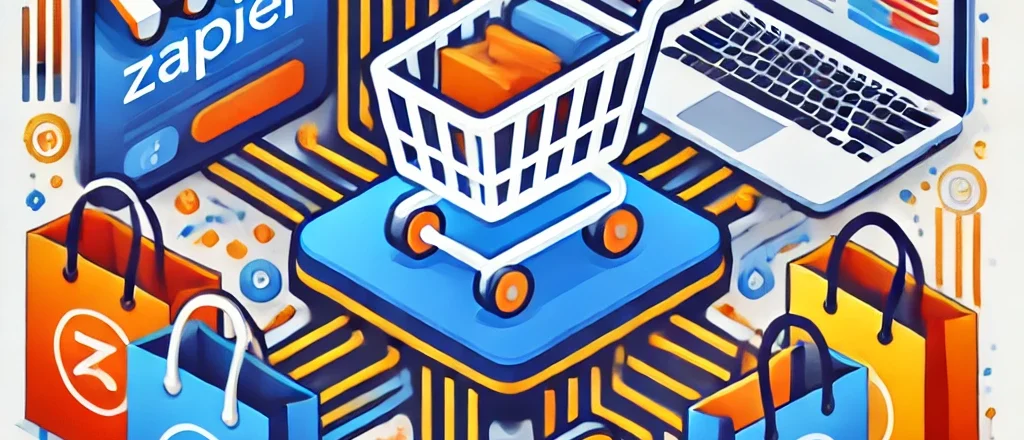
Executive Summary
This case study illustrates how an electronics store successfully transformed its manual quotation process into a fully automated workflow. By leveraging cloud-based automation tools, Large Language Models (LLMs), and vector database technology, the store streamlined its operations. Through the integration of Google Forms for user input, Zapier for workflow automation, a RESTful API for data orchestration, and LLMs (such as Llama 3) for generating natural language responses, the store significantly improved the efficiency, accuracy, and personalization of its quotation services. Consequently, the system handles complex product queries, recommends appropriate items, and generates a professionally formatted PDF quotation—all within minutes of a customer request.
Background
Business Need
The electronics store regularly received inquiries for bulk orders, product comparisons, and customized quotes. Previously, sales agents spent hours manually compiling item details, pricing, and discount structures into formal quotations. This approach was both time-consuming and prone to human error.
Primary Goals
- Automation: Minimize the manual workload of sales staff and expedite the quotation process.
- Accuracy and Relevance: Ensure quotations include precise product details, pricing, and availability.
- Scalability: Handle increasing customer inquiries without additional staff overhead.
- Professional Output: Provide polished, branded PDF quotations to customers promptly.
System Architecture Overview
The system comprises several integrated components, each playing a specific role in the automated workflow:
- Google Forms: Customers or sales representatives use Google Forms to input key requirements, including desired product categories, budget, and specific preferences.
- Zapier Integration: Acting as the automation bridge, Zapier triggers a workflow whenever a form is submitted. It sends the data to a REST API endpoint for further processing.
- Custom REST API Service: The API processes incoming requests, fetches relevant product information from a vector database, and interacts with the LLM model. It then generates a PDF and sends it to the customer.
- Vector Database: Semantic embeddings of product descriptions are stored in the vector database. These allow for quick and contextually relevant searches, ensuring precise product recommendations.
- LLM Model (Llama 3): The LLM generates natural-language quotations based on customer requirements and product data. It ensures the output is professional, coherent, and aligned with the store’s branding.
- Email Delivery Mechanism: Finally, the API sends the generated PDF via email to the customer, completing the end-to-end quotation process.
Detailed Workflow
Customer Submission (Google Forms)
A potential client visits the store’s website and completes a “Request a Quotation” form. They provide details such as name, email, desired product categories (e.g., “4K Monitors”), quantity, and special requirements (e.g., “Must have a 3-year warranty”). Upon submission, the form triggers the next step in the workflow.
Zapier Workflow Trigger
Zapier automates the workflow by extracting form data and sending it to a REST API endpoint. This ensures smooth data transfer without manual intervention.
Data Processing and Vector Database Query
The REST API processes the request by querying the vector database for products that match the specified criteria. For example, it searches for products labeled “business laptops” within the customer’s budget.
LLM-Based Quotation Generation
Using the data from the database, the REST API prompts the LLM to create a professional quotation. The LLM includes:
- Customer details
- Recommended products with specifications and pricing
- Discount information and bundles
- A closing statement encouraging further communication
PDF Rendering
The REST API converts the LLM’s output into a well-designed PDF using libraries like wkhtmltopdf. The PDF includes branding elements such as the store logo and contact information.
Email Delivery and Logging
The final PDF is emailed to the customer. The system also logs transaction details for future reference, ensuring traceability and enabling follow-ups by the sales team.
System Diagrams
High-Level Architecture Diagram

Process Flow Diagram

Technical Considerations
Data Privacy and Security
To protect customer information, all data transmission between Google Forms, Zapier, and the API is encrypted via HTTPS. Additionally, emails are sent securely.
Scalability
The system is designed to handle high traffic with components like Zapier and scalable cloud-hosted vector databases.
Error Handling
In cases where no matching products are found, the system suggests alternatives. Failed email deliveries trigger automated retries and notify administrators.
Outcomes & Benefits
Reduced Manual Effort
Sales staff no longer spend time manually compiling quotations. Instead, they focus on building customer relationships and closing deals.
Improved Speed and Responsiveness
The automated system ensures that customers receive their quotations within minutes, significantly enhancing satisfaction and conversion rates.
Enhanced Accuracy and Relevance
The vector database and LLM work together to provide precise and personalized recommendations. This minimizes errors and builds customer trust.
Scalability and Future Proofing
The system adapts to growing product catalogs and changing customer needs by updating vector embeddings and retraining the LLM.
Conclusion
This case study demonstrates how integrating Google Forms, Zapier, a REST API, a vector database, and an LLM revolutionized the sales quotation process. The solution not only improves efficiency and accuracy but also offers a scalable template for other businesses seeking to modernize workflows through cutting-edge automation and AI.

